What Animals Lived During The Mesozoic Era
Mesozoic Era Animals
Examples of Mesozoic Era animals include dinosaurs, pterosaurs, ammonites, sharks, plesiosaurs, ichthyosaurs, mosasaurs, pseudosuchians, insects, and early mammals. Although dinosaurs were the ascendant land animals of the Mesozoic Era, many other of import animal groups evolved and thrived during this fourth dimension.
On this page is a list of Mesozoic Era animals with pictures, facts, and links to further information…
Introduction
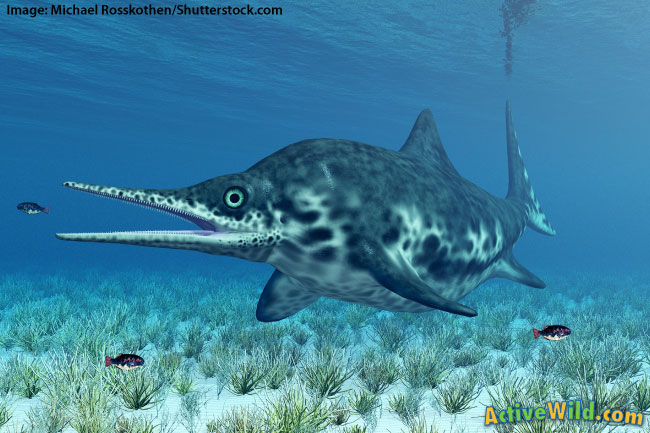
The Mesozoic Era began 251.902 mya (1000000 years ago) and lasted for 185.9 million years. For much of this fourth dimension, reptiles were the ascendant vertebrate animals, not merely on country (in the form of dinosaurs), but besides in the air (in the form of pterosaurs) and in the sea (in the form of plesiosaurs, ichthyosaurs and mosasaurs).
The Mesozoic Era has been termed the "Age of Reptiles" due to the authorisation of this group of animals.
The Mesozoic Era ended 66 mya (million years agone) with a mass extinction outcome thought to have been caused by a meteor strike.
Below is a list of animals from the Mesozoic Era. The list includes only Mesozoic Era animals that are non dinosaurs; so if yous desire to discover the dinosaurs of the Mesozoic Era, bank check out these pages instead:
- Triassic Dinosaurs with Pictures and Facts
- Jurassic Dinosaurs List with Pictures and Facts
- Cretaceous Dinosaurs List with Pictures and Facts
Folio Alphabetize
The Mesozoic Era is divided into three periods: Triassic, Jurassic and Cretaceous. Y'all can utilise the alphabetize below to run into Mesozoic animals from each of these periods, or curl down to see all of the animals.
- Mesozoic Animals From The Triassic Menstruum
- Mesozoic Animals From The Jurassic Period
- Mesozoic Animals From The Cretaceous Period
Mesozoic Era Animals List
Mesozoic Animals From The Triassic Period
Ceratites
- Blazon of animal: Cephalopod, Ammonite
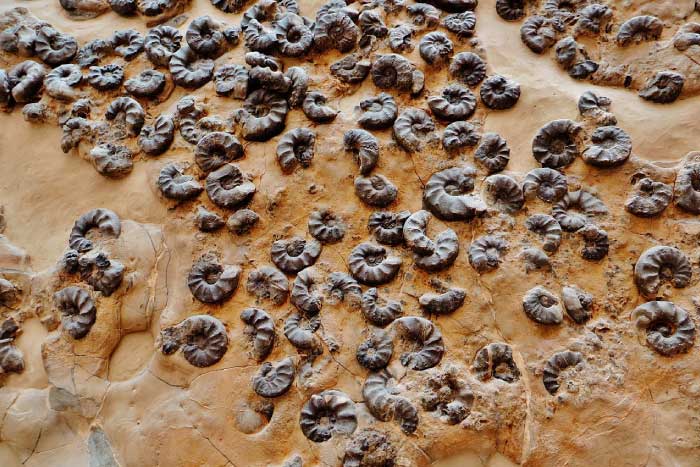
Ceratites was a genus of ammonite that lived in the early and middle Triassic Menstruation. It belonged to a larger grouping of ammonites, the order Ceratitida. Most Triassic ammonites belonged to this grouping.
Ammonites became extinct at the end of the Mesozoic Era.
- You can observe out more than about ammonites on this page: Ammonite Facts
Effigia
- Blazon of brute: Pseudosuchian archosaur

Effigia was a 10 ft. / 3 k long, fast-moving, bipedal reptile. Despite closely resembling dinosaurs of family Ornithomimidae, it was a pseudosuchian.
Pseudosuchians were a group of reptiles that competed with early dinosaurs in the Triassic Period. They include the ancestors of today's crocodiles.
Effigia lacked teeth, and instead broke its food autonomously with a pecker. It is believed to have been an omnivore, feeding on vegetation and small animals.
This Mesozoic animate being was discovered in the Ghost Ranch Quarry, a fossil hotspot located in New Mexico, U.s..
Eudimorphodon
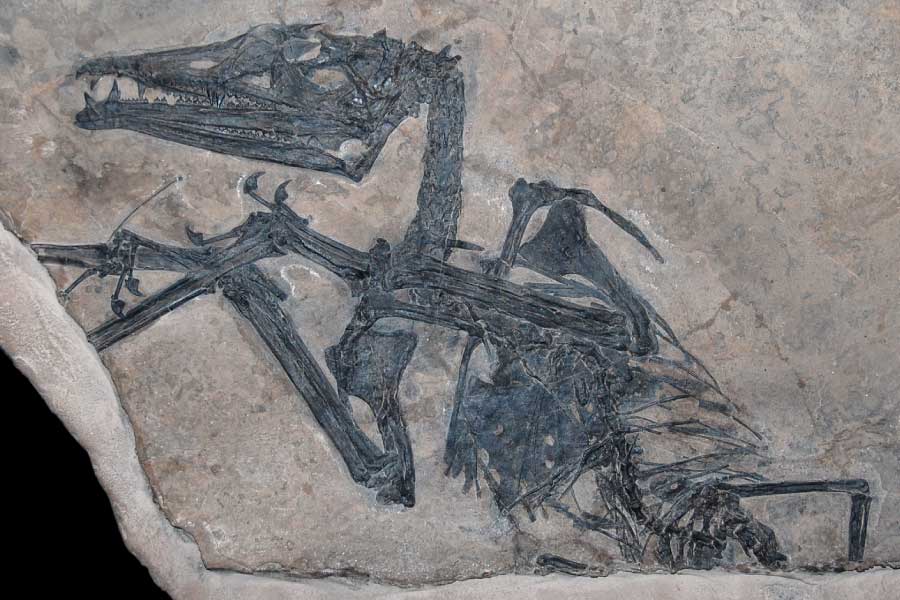
- Type of beast: Pterosaur
Eudimorphodon is one of the earliest-known pterosaurs. This flying reptile of the Late Triassic Menses was first discovered in what is at present Italy.
This Triassic pterosaur had a wingspan of 3.three ft / 1 meter and was equipped with claws for climbing on cliffs.
Fossilized fish scales have been found with Eudimorphodon fossils, suggesting that the pterosaur was a fish-eater.
- You can find out more than about pterosaurs on this page: Pterosaur Facts
Hybodus
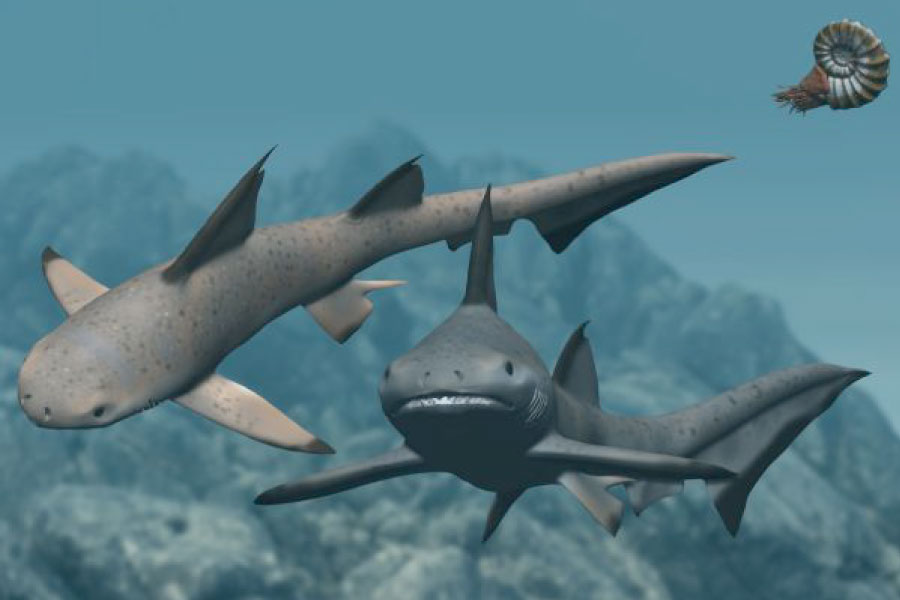
- Type of animal: Fish, Shark
Hybodus was a 6.5 ft / two m long shark that first appeared in the Permian Menstruum and became extinct in the Late Cretaceous Period.
Similar modern sharks, Hybodus replaced its teeth continuously throughout its lifetime. It had ii dorsal fins, each of which was supported by a spine, which may take provided protection from other marine predators of the Mesozoic Era.
Lystrosaurus
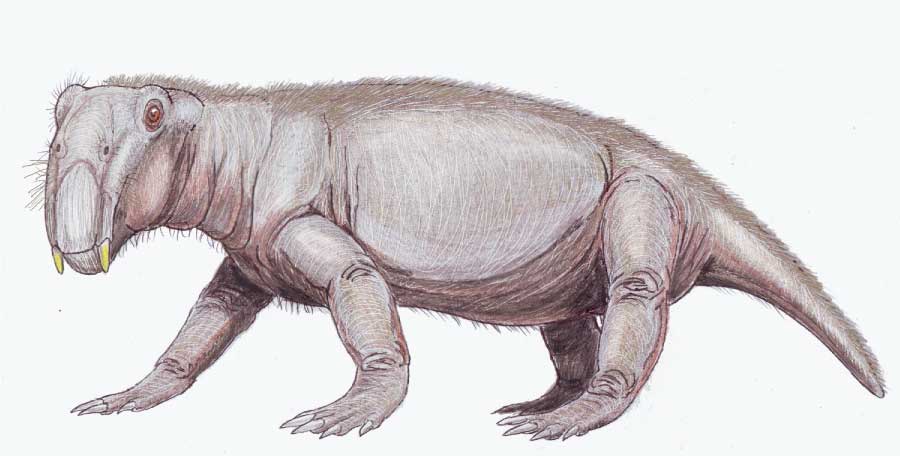
- Blazon of animal: Dicynodont
Lystrosaurus, a sus scrofa-like herbivore, was one of the few animals to survive the Permian-Triassic Extinction Outcome that occurred immediately before the Mesozoic Era. Information technology was the most common country vertebrate of the Early Triassic.
The powerful forelimbs of Lystrosaurus suggest information technology may have been a burrower. It had two tusks, and, similar all dicynodonts, a hard pecker for eating tough vegetation.
Mixosaurus

- Type of animal: Ichthyosaur
Mixosaurus was a member of a group of marine reptiles known every bit ichthyosaurs. Ichthyosaurs are descended from terrestrial (state) reptiles that gradually evolved to alive in the sea.
Early ichthyosaurs had long, eel-shaped bodies, whereas subsequently species were more fish-like in appearance.
Mixosaurus is seen as a transitional animal between the earlier and after ichthyosaurs – its proper name ways "mixed cadger".
Nothosaurus
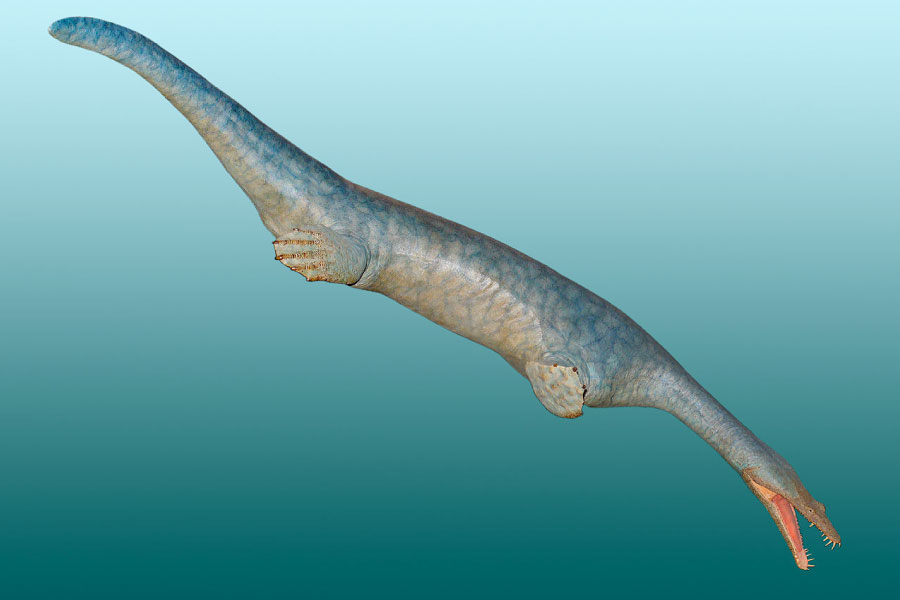
- Type of brute: Nothosaur
Nothosaurus was a semi-aquatic marine reptile whose lifestyle is thought to resemble that of modern-solar day seals. With webbed feet and long tail, Information technology was a capable swimmer, even so was able to haul itself out of the h2o to rest.
Postosuchus

- Blazon of creature: Pseudosuchian archosaur
Postosuchus was a fearsome Mesozoic predator that lived in North America in the Late Triassic Period. It belonged to the family Rauisuchidae.
An noon predator, Postosuchus grew upward to fifteen ft / iv.5 m in length and preyed on smaller reptiles, including dinosaurs.
Thrinaxodon

- Type of animal: Cynodont
Cynodonts were a group of animals that appeared in the Late Permian. Although early cynodonts resembled reptiles, the group includes the ancestors of all mammals.
Thrinaxodon was a cynodont that lived in the Early Triassic. It was the size of a cat and maybe had pilus. Its posture was less sprawling, and more mammal-like, than that of its ancestors. It was likely an active predator.
Triadobatrachus
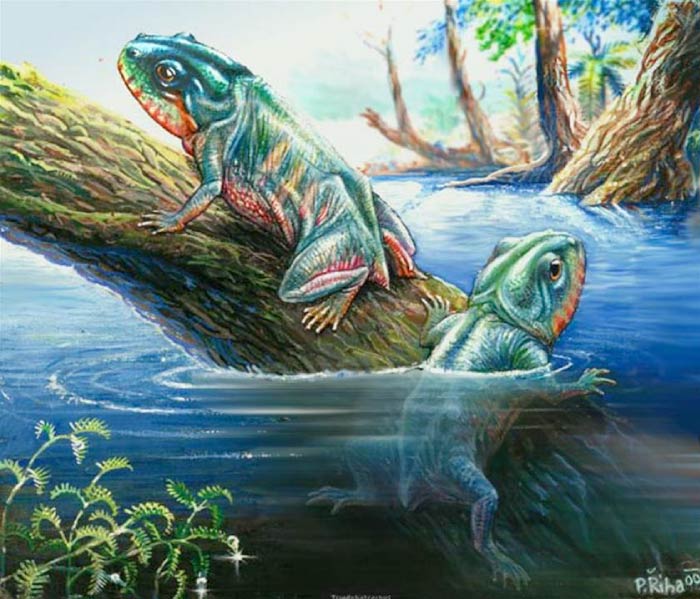
- Type of creature: Amphibian
Triadobatrachus was an amphibian that live in the Early on Triassic Catamenia. It was a frog-like brute thought to be a transitional fossil between the commencement frogs and before amphibians.
Mesozoic Animals From The Jurassic Period
Dactylioceras
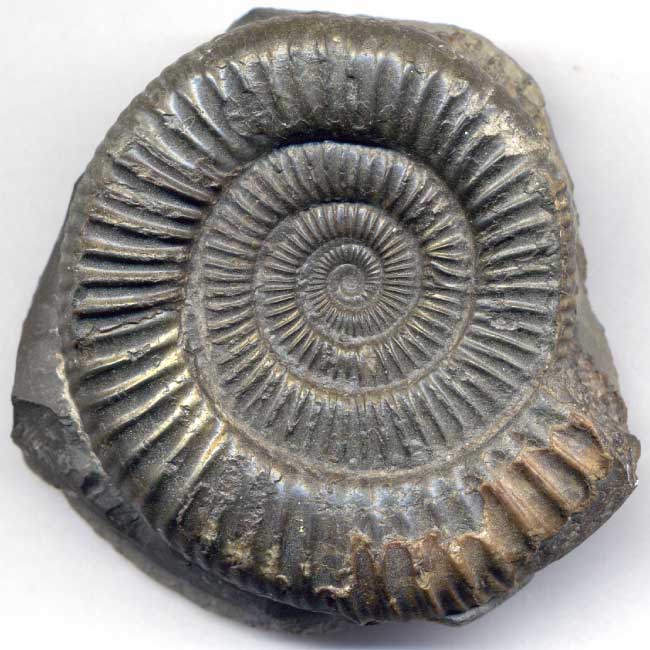
- Type of animal: Cephalopod, Ammonite
Dactylioceras is a genus of small ammonite with a heavily ribbed trounce. It was abundant in Europe, and can exist used to date other fossils from the Early Jurassic Menstruation.
- Yous can find out more about ammonites on this page: Ammonite Facts
Eocarcinus
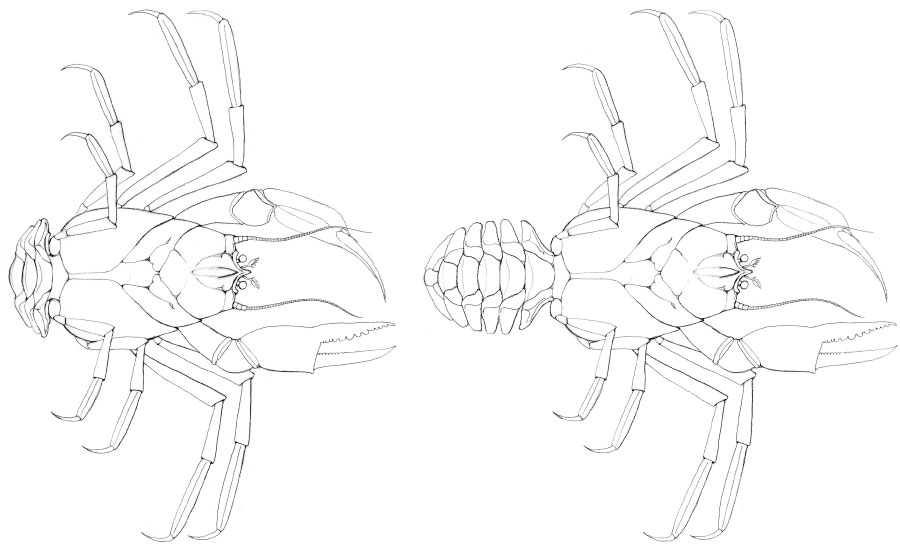
- Blazon of creature: Crustacean, crab
Eocarcinus is a decapod crustacean from the Early Jurassic. It is either 1 of the very starting time crabs, or a close relation of early on crab-like crustaceans. (Decapoda is a group of crustaceans that includes animals such as crabs, lobsters and prawns.)
- You lot can discover out more about crustaceans on this folio: Crustaceans: The Ultimate Guide
Fruitafossor

- Type of animal: Mammal
Fruitafossor was a mammal from the Tardily Jurassic. It had strong forelimbs – a probable adaptation for digging. Its teeth are similar to those of modern-24-hour interval insect-eating animals such equally armadillos and aardvarks. Fruitafossor probably ate termites and other insects, digging in the ground to reach its prey.
Ichthyosaurus
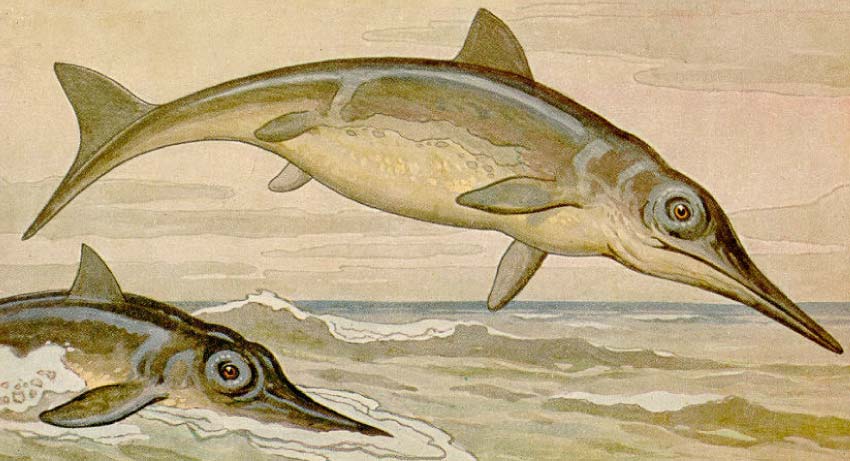
- Type of creature: Ichthyosaur
Ichthyosaurus was an aquatic reptile that lived in the Tardily Triassic Period. It was 6 to xi ft. (2 to 3.iii m) in length, and bore a hit resemblance to today'southward dolphins. This is an example of convergent development – the process by which two unrelated species evolve similar characteristics.
Kayentachelys
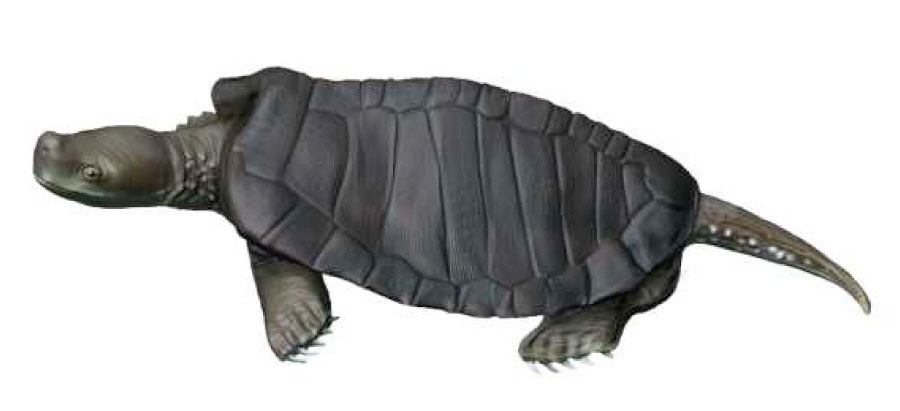
- Type of creature: Turtle
Although not the earliest turtle (turtles are thought to have appeared in the Triassic Period with animals such as Odontochelys), Kayentachelys is the kickoff to be plant in large numbers.
This small turtle lived in the Early on Jurassic, and was discovered in (and named after) the Kayenta Germination in Arizona, U.s..
Leedsichthys
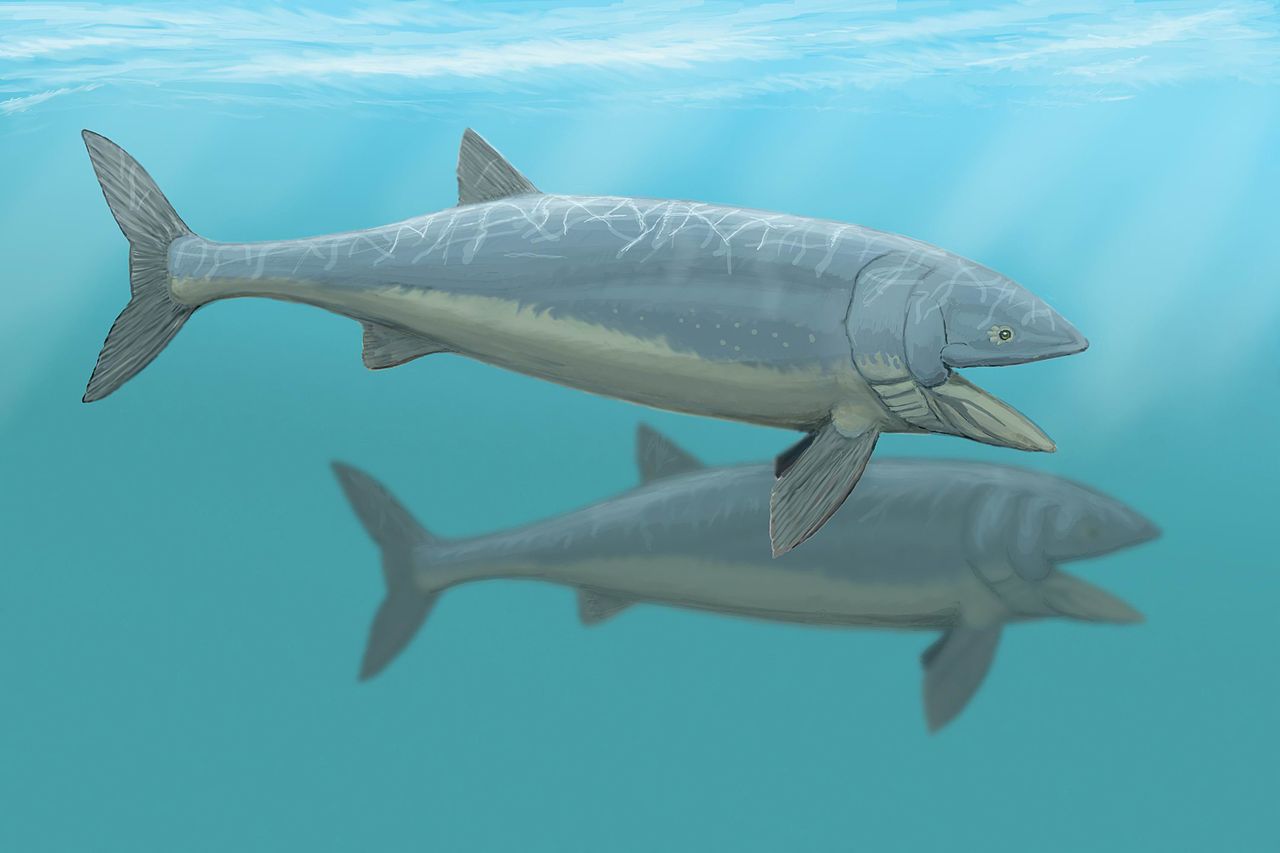
- Type of animal: Ray-Finned Fish
Leedsichthys is thought to be the largest bony fish that always lived, with an estimated maximum length of 72 ft. / 22m. Even today's whale shark, which is a shark, not a bony fish, rarely, if ever, attains such a length.
(The bony fish are one of ii major groups of living fish, the other being the sharks and rays, which have cartilaginous skeletons.)
Like today's baleen whales, Leedsichthys fed by filtering plankton from huge mouthfuls of seawater.
Leedsichthys lived in the Middle and Late Jurassic catamenia, and has been found in what is now Northern Europe and Chile.
Liopleurodon
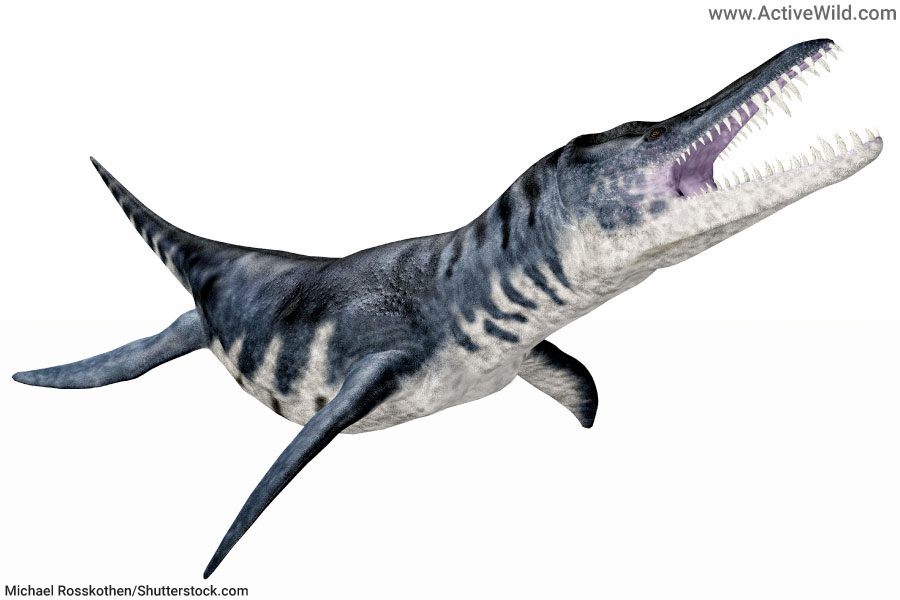
- Type of fauna: Pliosaur
Liopleurodon was an apex predator that swam in the oceans of the Middle and Late Jurassic Period.
The maximum length of Liopleurodon was once thought to be in the region of eighty ft. / 25 m. Today, liopleurodon's maximum size is believed to be somewhat shorter, at between twenty and 23 ft / 6 and vii thousand – around the size of a modern killer whale.
Pliosaurs were plesiosaurs with brusque necks and powerful, tooth-filled jaws.
Plesiosaurus
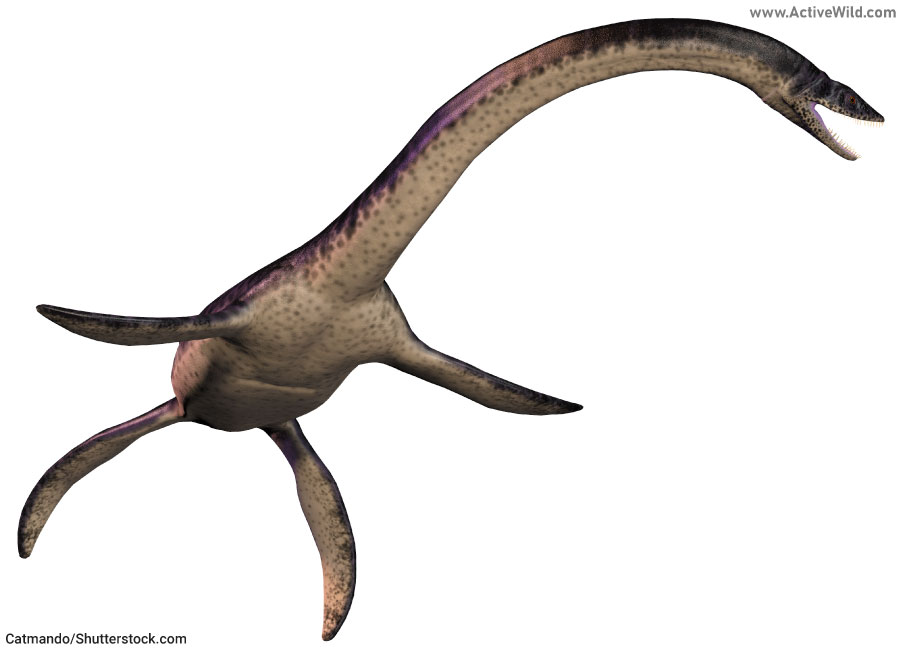
- Type of animal: Plesiosaur
Plesiosaurus was the first plesiosaur to be named (by paleontologists Henry De la Beche and William Conybeare in 1821). Information technology gives its name to the entire order, Plesiosauria. Today, over 100 species of plesiosaurs take been discovered.
Plesiosaurus was 10 to 16.four ft. / 3 to 5 meters in length and had a long neck and a small head. Like other plesiosaurs, it propelled itself through the water with two pairs of flippers.
All plesiosaurs are believed to have given nativity to live young (rather than laying eggs) and may have been warm-blooded.
Protosuchus
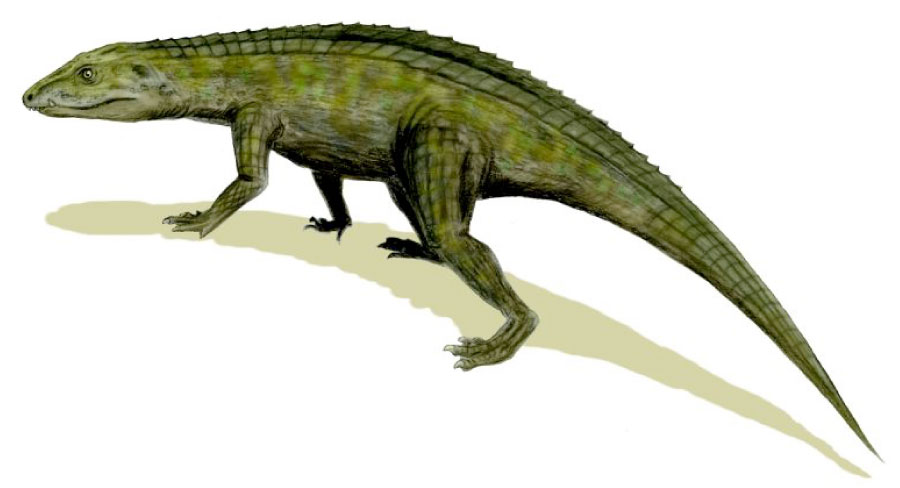
- Blazon of animal: Protosuchid
Between the Triassic and Jurassic Periods Earth underwent a mass extinction in which most of the dinosaurs' main reptilian competitors – the pseudosuchians – became extinct.
The merely group of pseudosuchians to survive were the crocodylomorphs – a grouping that contained the ancestors of today'due south crocodiles, alligators and caimans.
One such animal was Protosuchus – a 3.3 ft. / i m long predator that resembled a modern crocodile but with longer legs. With an upright stance, Protosuchus would have been a fast runner that likely hunted on land rather than in the h2o.
Pterodactylus

- Type of animal: Pterosaur
Pterodactylus was a pterosaur with a wingspan of around 3.4 ft / ane.04 meters. Pterodactylus was the first pterosaur to be discovered and identified as a flying reptile.
Considering Pterodactylus is so well-known, the name "Pterodactyl" is oft used (incorrectly) to refer to whatever Pterosaur.
A recent analysis of Pterodactylus' teeth suggest that this Mesozoic Era brute mainly preyed on invertebrates.
- You can find out more than about pterosaurs on this page: Pterosaur Facts
Mesozoic Animals From The Cretaceous Period
Deinosuchus
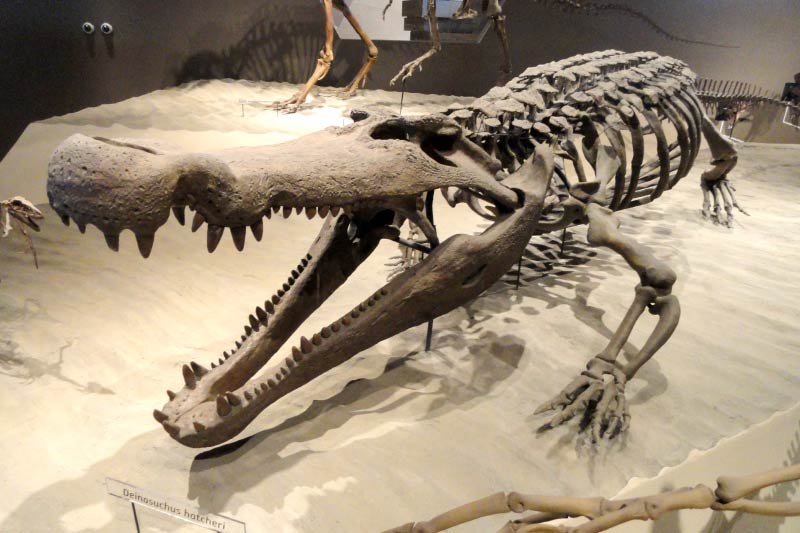
- Type of animal: Crocodilian
They may take ruled most of the land, but the dinosaurs of the Cretaceous Period didn't take it all their ain way: the top predator in some North American aquatic habitats was the mighty Deinosuchus – one of the largest crocodilians ever to have lived.
Looking much similar a modern crocodilian, and having a similar lifestyle, Deinosuchus reached lengths of 39 ft. / 12 meters – twice the size of today'south largest crocodile, the saltwater crocodile.
Deinosuchus is one of the earliest members of the superfamily Alligatoroidea, which contains animals more than closely related to today's alligators than to other crocodilians.
Elasmosaurus
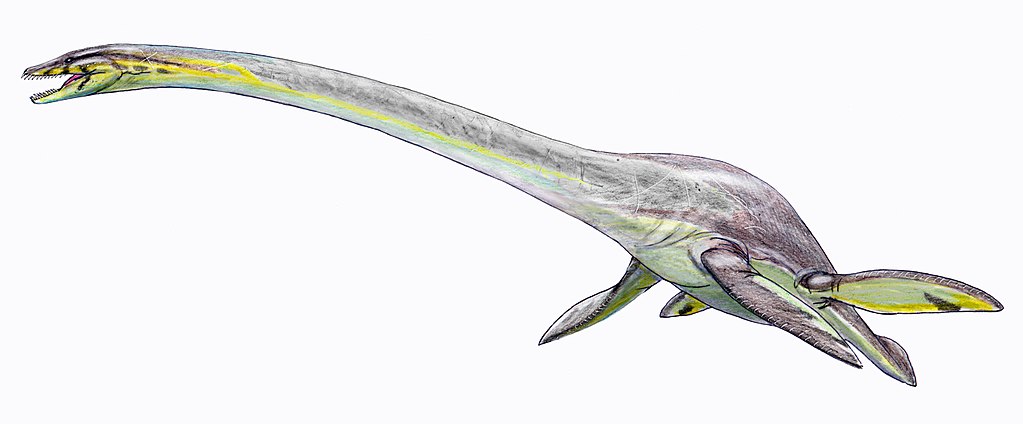
- Blazon of animal: Plesiosaur
Even skillful paleontologists like Edward Drinker Cope make mistakes: when he beginning identified the fossilized remains of Elasmosaurus, Cope idea that the creature's ridiculously long cervix was its tail.
Information technology was an easy mistake to make: Elasmosaurus has 72 cervix vertebrae; but 1 other animal (Albertonectes, another plesiosaur) has more.
Elasmosaurus swam in the shallow waters of the Western Interior Seaway, an inland bounding main that carve up Northward America into 2 dissever landmasses during the Late Cretaceous.
Kronosaurus
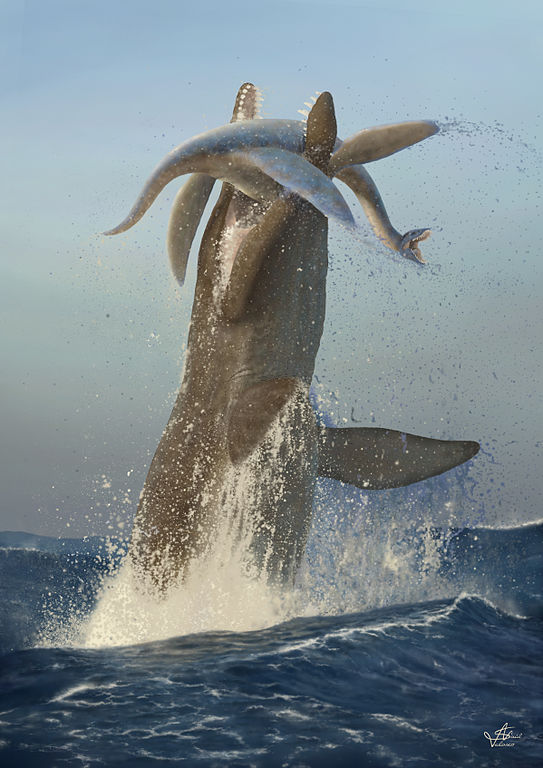
- Blazon of brute: Pliosaur
Kronosaurus was i of the largest pliosaurs, with a maximum estimated length of around 36 ft. / ten.9 g.
Like all pliosaurs, Kronosaurus was a plesiosaur with a short neck. It swam with is four large flippers, and is idea to have fed mainly on large fish.
Mosasaurus
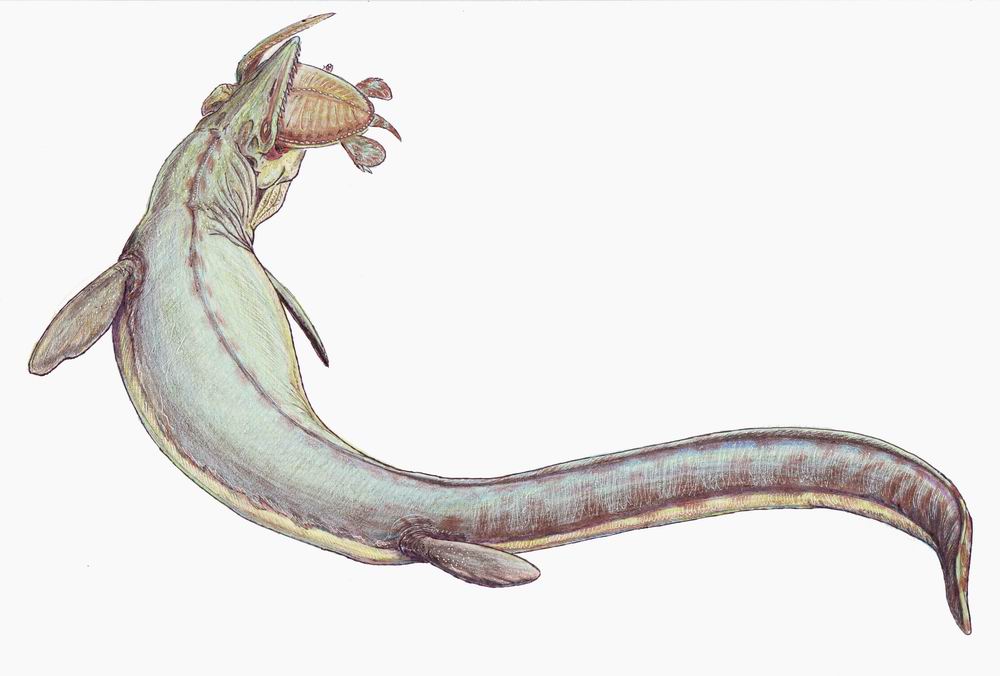
- Type of animal: Mosasaur
Mosasaurus was a huge swimming lizard that appeared in the Tardily Cretaceous period. This 56 ft. / 17.i thousand long aquatic reptile was an apex predator that used bursts of high speed to catch large prey animals such as turtles, sharks and even other mosasaurs.
Mosasaurs belong to the society Squamata – the order to which today's lizards and snakes vest. Mosasaurs evolved from aquatic lizards and became the ascendant marine predators at the very end of the Mesozoic Era.
Pteranodon
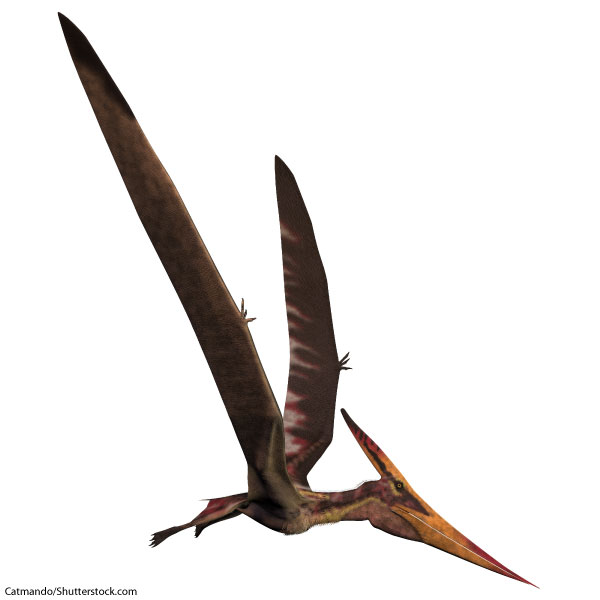
- Type of animal: Pterosaur
With a wingspan of around 23 ft./ 7 m, Pteranodon was one of the largest-known Pterosaurs.
Similar all of the after pterosaurs, Pteranodon lacked both teeth and a tail. Its head was adorned with a large crest. It soared in the Late Cretaceous skies of North America and fed on fish.
- You tin find out more about pterosaurs on this page: Pterosaur Facts
Quetzalcoatlus
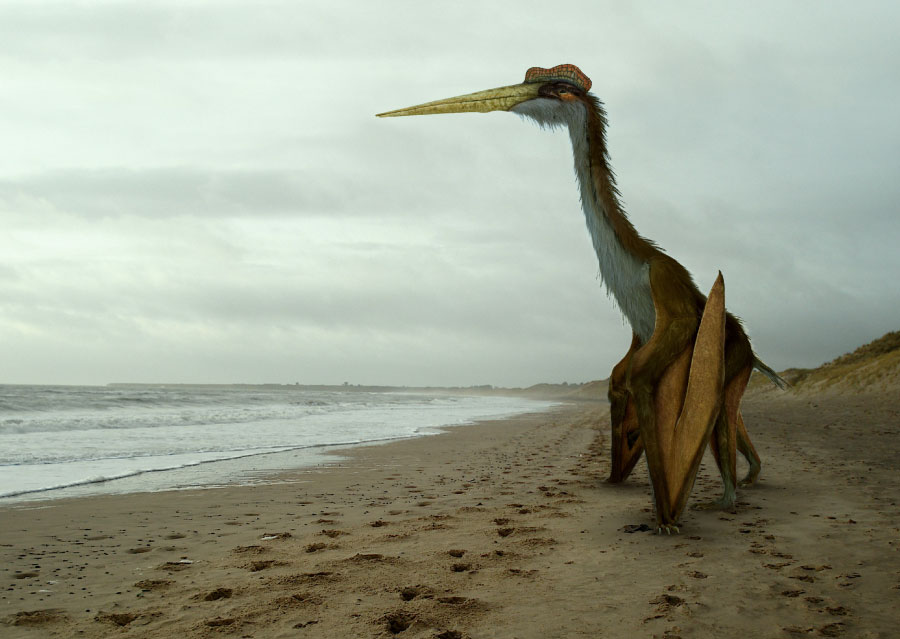
- Blazon of fauna: Pterosaur
Pteranodon may have been big, but information technology was dwarfed by Quetzalcoatlus. With a wingspan of effectually 36 ft. / 11 chiliad, this huge reptile is amidst the largest flight animals e'er to have lived.
Quetzalcoatlus was discovered in Texas, U.s.. Information technology is thought to have hunted on land past stalking small vertebrate prey.
- You can find out more than about pterosaurs on this folio: Pterosaur Facts
Scaphites
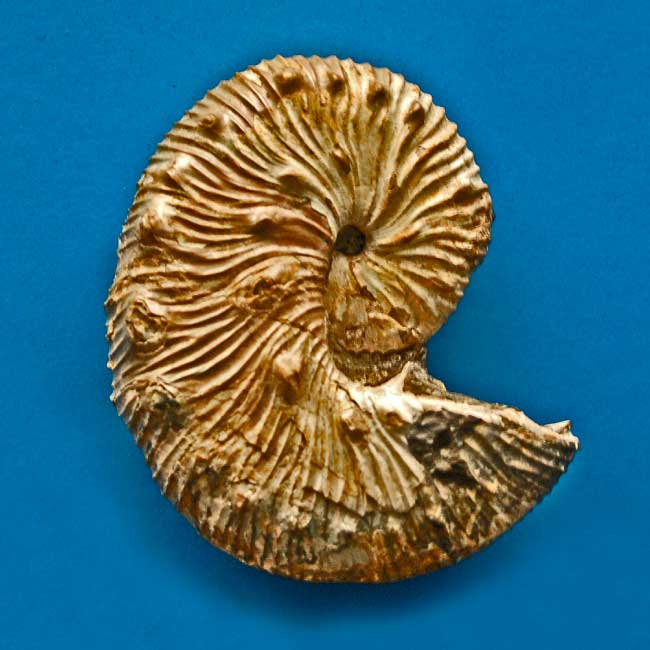
- Blazon of animal: Cephalopod, Ammonite
Scaphites was a common ammonite of the Belatedly Cretaceous Period. It has a distinctive "hooked" shape, and was effectually 8" / 20 cm in width.
There is some evidence that some Scaphites survived the Cretaceous-Paleogene Extinction Event at the end of the Mesozoic Era and lived for some time into the Paleocene.
- Yous can observe out more about ammonites on this folio: Ammonite Facts
Simosuchus
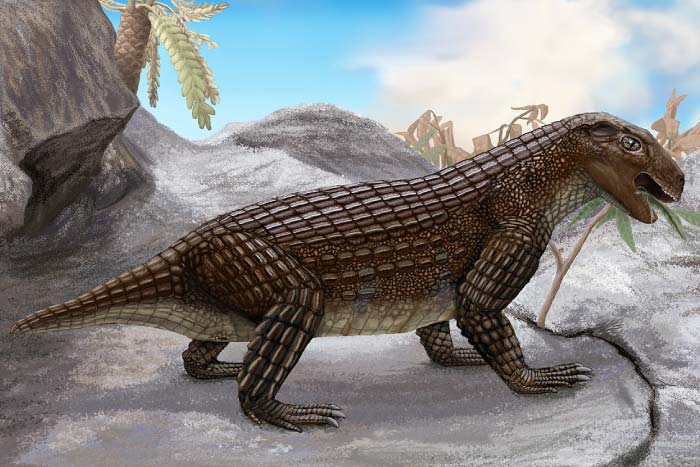
- Type of brute: Crocodylomorph
Simosuchus was a 3.3 ft. / ane m long Crocodylomorph that lived in what is now Madagascar in the Belatedly Cretaceous.
The body of this Mesozoic reptile resembled that of a modernistic crocodile, but, dissimilar other crocodiles, its snout was brusk and wide. This, and its foliage-shaped teeth, suggest that Simosuchus may take been a herbivore.
Squalicorax
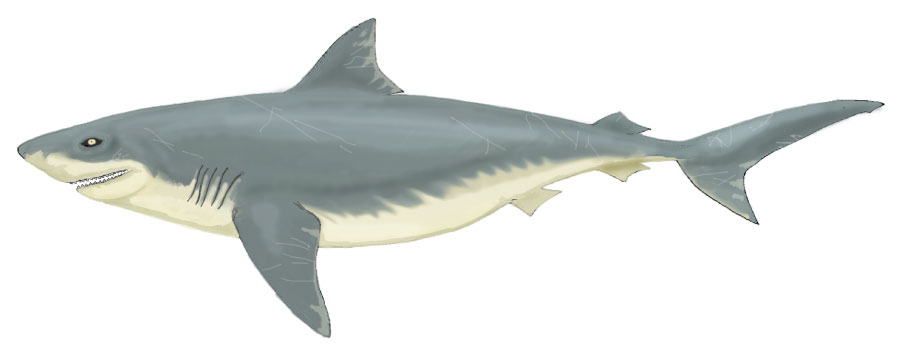
- Blazon of animate being: Fish, Shark
Swimming in the oceans throughout the Cretaceous Period was Squalicorax, otherwise known as the crow shark. Growing upward to 16.4 ft. / 5m in length, the crow shark likely predated other fish, as well as reptiles such as mosasaurs.
A Squalicorax tooth was found embedded in the foot of a hadrosaurid dinosaur. This suggests that Squalicorax was to some extent a scavenger, as hadrosaurids lived on country. The shark would have been feeding on the body of a hadrosaurid that had concluded up in the ocean.
Xiphactinus
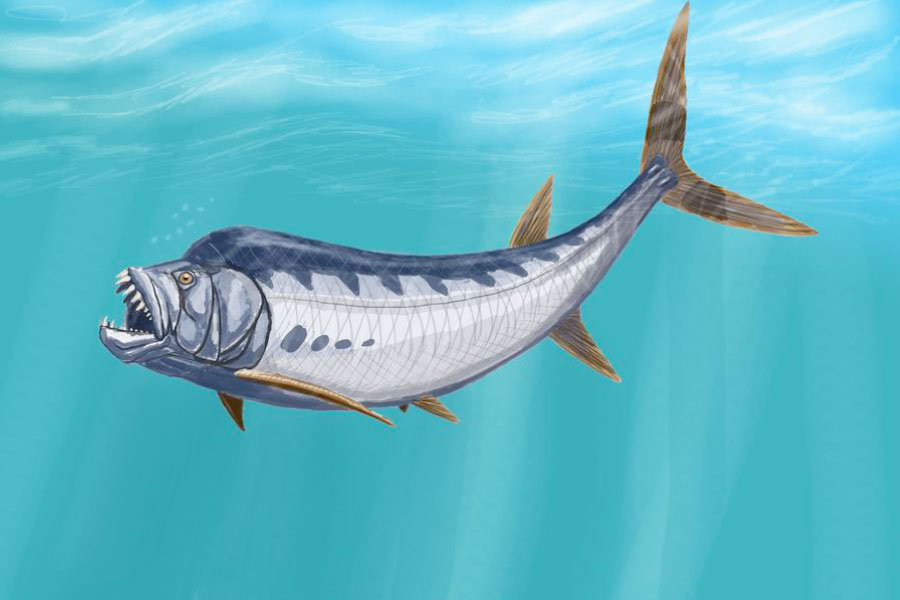
- Type of creature: Fish
Growing to around 20 ft. / six chiliad in length, Xiphactinus was a fearsome Mesozoic fish whose fossilized remains have been found in North and S America, Europe and Australia.
Xiphactinus had a forked tail and was built for speed. With a mouthful of abrupt teeth, it would take been a formidable predator. Several Xiphactinus fossils take been establish with the remains of other fish in their stomachs.
Further Reading: Discover More With Active Wild
Y'all can see more than Mesazoic Era animals on the post-obit pages:
- Triassic Animals – Notice The Animals That Lived With The Dinosaurs In The Triassic Period
- Jurassic Animals – A Listing Of Animals That Lived In The Jurassic Menses (That Weren't Dinosaurs!)
- Cretaceous Period Animals That Weren't Dinosaurs
What is an Era? What does "Cretaceous Period" hateful? Find out here: Geologic Timescale Facts
Discover amazing dinosaurs on this page: Dinosaur List with Pictures & Facts
Detect out more near dinosaurs and prehistoric life:
- Dinosaur Books
- Dinosaur DVDs
- Prehistoric Animal Books
Source: https://www.activewild.com/mesozoic-era-animals/
Posted by: placeneway1985.blogspot.com

0 Response to "What Animals Lived During The Mesozoic Era"
Post a Comment